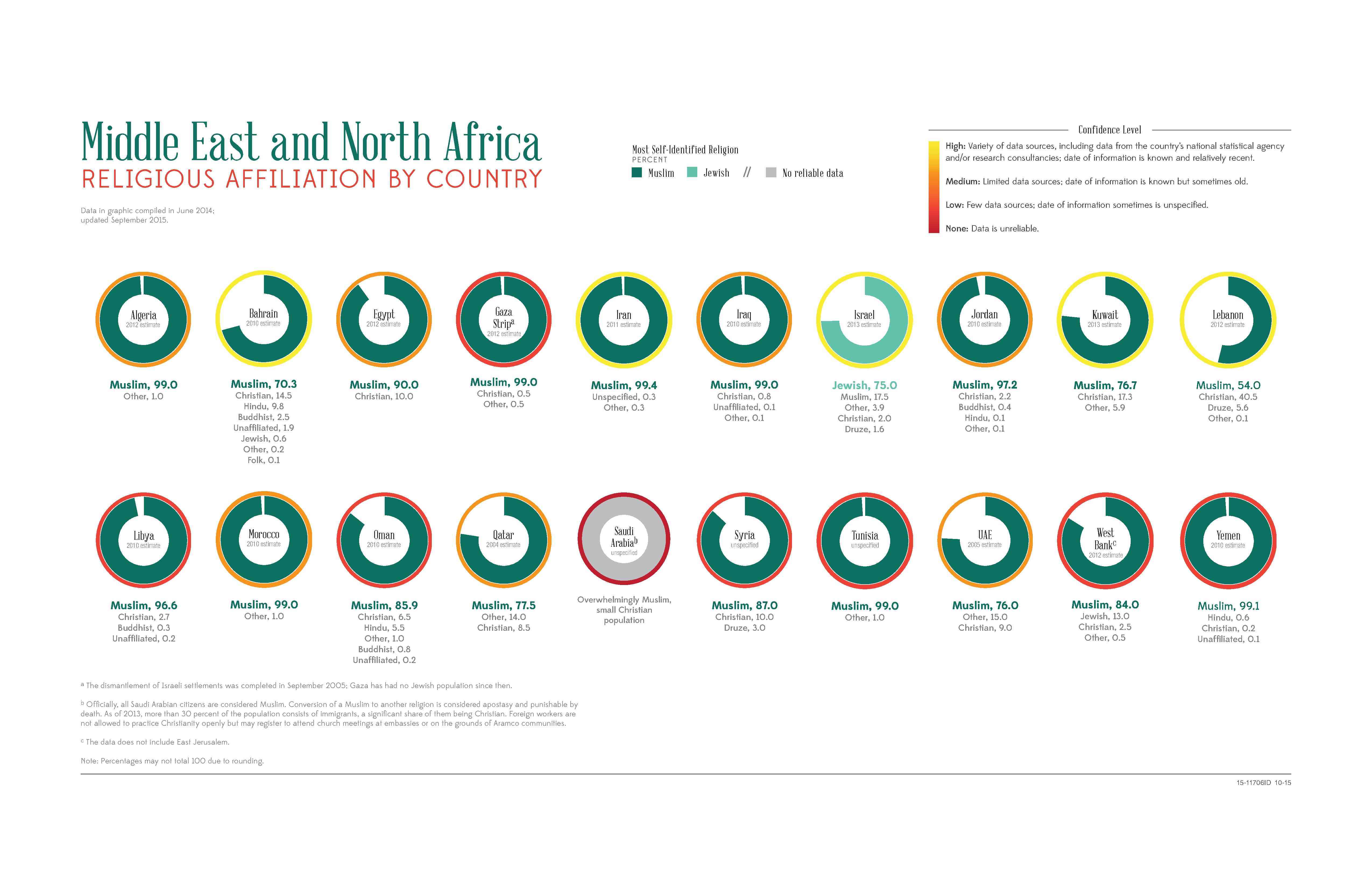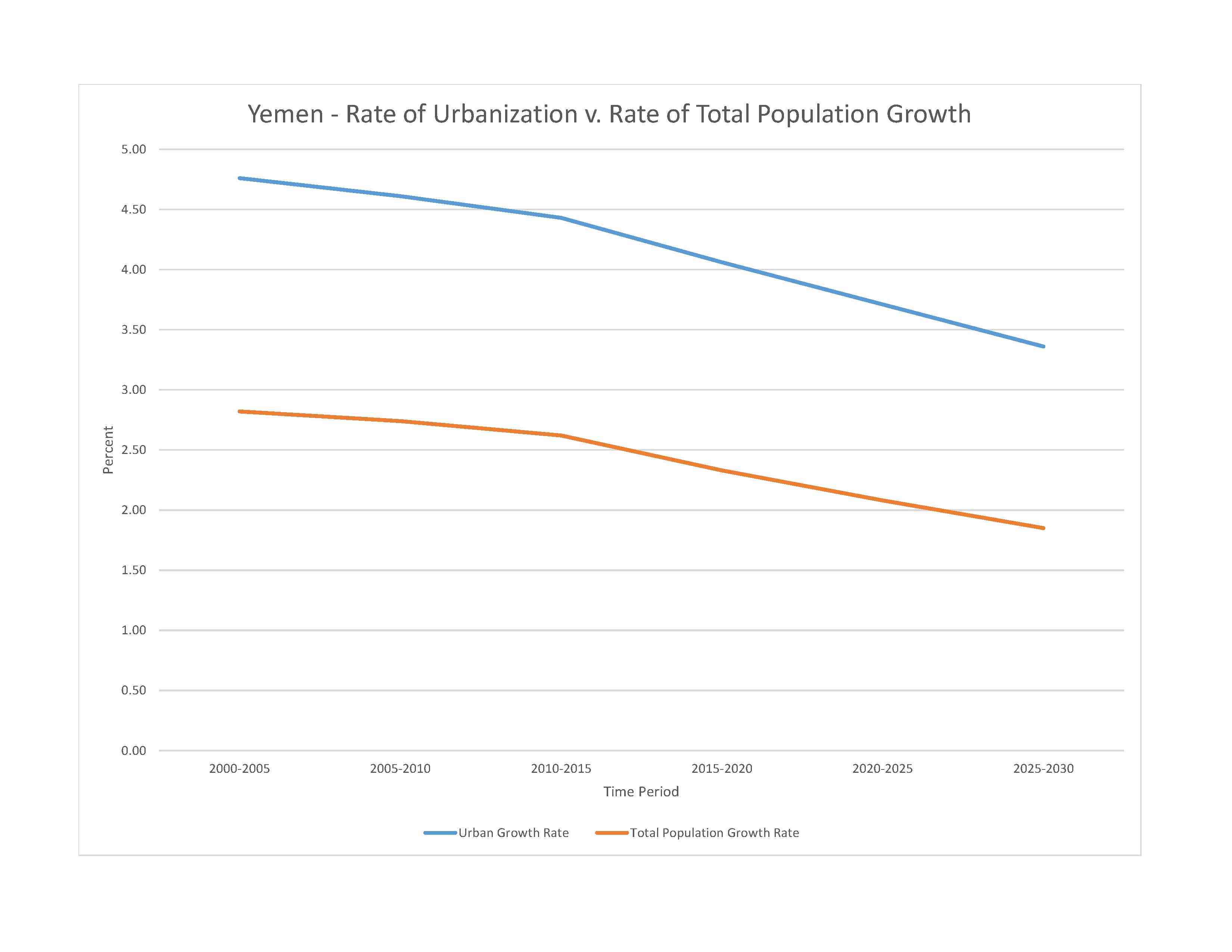
31,565,602 (2023 est.)
noun: Yemeni(s)
adjective: Yemeni
predominantly Arab; but also Afro-Arab, South Asian, European
Arabic (official); note - a distinct Socotri language is widely used on Socotra Island and Archipelago; Mahri is still fairly widely spoken in eastern Yemen
major-language sample(s):
كتاب حقائق العالم، المصدر الذي لا يمكن الاستغناء عنه للمعلومات الأساسية (Arabic)
The World Factbook, the indispensable source for basic information.
Arabic audio sample:
Muslim 99.1% (official; virtually all are citizens, an estimated 65% are Sunni and 35% are Shia), other 0.9% (includes Jewish, Baha'i, Hindu, and Christian; many are refugees or temporary foreign residents) (2020 est.)

0-14 years: 35.14% (male 5,641,548/female 5,449,491)
15-64 years: 61.52% (male 9,829,725/female 9,590,956)
65 years and over: 3.34% (2023 est.) (male 464,548/female 589,334)
total dependency ratio: 71.7
youth dependency ratio: 69.4
elderly dependency ratio: 4.7
potential support ratio: 19.9 (2021 est.)
total: 21.6 years (2023 est.)
male: 21.5 years
female: 21.8 years
1.83% (2023 est.)
24.1 births/1,000 population (2023 est.)
5.5 deaths/1,000 population (2023 est.)
-0.2 migrant(s)/1,000 population (2023 est.)
the vast majority of the population is found in the Asir Mountains (part of the larger Sarawat Mountain system), located in the far western region of the country
urban population: 39.8% of total population (2023)
rate of urbanization: 3.71% annual rate of change (2015-20 est.)

3.292 million SANAA (capital), 1.080 million Aden, 941,000 Taiz, 772,000 Ibb (2023)
at birth: 1.05 male(s)/female
0-14 years: 1.04 male(s)/female
15-64 years: 1.02 male(s)/female
65 years and over: 0.79 male(s)/female
total population: 1.02 male(s)/female (2023 est.)
20.8 years (2013 est.)
note: data represents median age at first birth among women 25-49
183 deaths/100,000 live births (2020 est.)
total: 45.5 deaths/1,000 live births (2023 est.)
male: 50.9 deaths/1,000 live births
female: 40 deaths/1,000 live births
total population: 67.8 years (2023 est.)
male: 65.5 years
female: 70.3 years
2.91 children born/woman (2023 est.)
1.42 (2023 est.)
33.5% (2013)
improved: urban: 98.5% of population
rural: 84.2% of population
total: 99.6% of population
unimproved: urban: 1.5% of population
rural: 15.8% of population
total: 10.4% of population (2020 est.)
4.3% of GDP (2015)
0.53 physicians/1,000 population (2014)
0.7 beds/1,000 population (2017)
improved: urban: 83.5% of population
rural: 44.2% of population
total: 59.1% of population
unimproved: urban: 16.5% of population
rural: 55.8% of population
total: 40.9% of population (2020 est.)
degree of risk: high (2023)
food or waterborne diseases: bacterial diarrhea, hepatitis A, and typhoid fever
vectorborne diseases: dengue fever, malaria, and sexually transmitted diseases: hepatitis B (2024)
water contact diseases: schistosomiasis
note: on 31 August 2022, the US Centers for Disease Control and Prevention (CDC) issued a Travel Alert for polio in Asia; Yemen is currently considered a high risk to travelers for circulating vaccine-derived polioviruses (cVDPV); vaccine-derived poliovirus (VDPV) is a strain of the weakened poliovirus that was initially included in oral polio vaccine (OPV) and that has changed over time and behaves more like the wild or naturally occurring virus; this means it can be spread more easily to people who are unvaccinated against polio and who come in contact with the stool or respiratory secretions, such as from a sneeze, of an “infected” person who received oral polio vaccine; the CDC recommends that before any international travel, anyone unvaccinated, incompletely vaccinated, or with an unknown polio vaccination status should complete the routine polio vaccine series; before travel to any high-risk destination, the CDC recommends that adults who previously completed the full, routine polio vaccine series receive a single, lifetime booster dose of polio vaccine
17.1% (2016)
total: 0.02 liters of pure alcohol (2019 est.)
beer: 0.02 liters of pure alcohol (2019 est.)
wine: 0 liters of pure alcohol (2019 est.)
spirits: 0 liters of pure alcohol (2019 est.)
other alcohols: 0 liters of pure alcohol (2019 est.)
total: 20.3% (2020 est.)
male: 32.5% (2020 est.)
female: 8.1% (2020 est.)
39.9% (2013)
60.4% (2023 est.)
N/A
definition: age 15 and over can read and write
total population: 70.1%
male: 85.1%
female: 55% (2015)
NOTE: The information regarding Yemen on this page is re-published from the 2024 World Fact Book of the United States Central Intelligence Agency and other sources. No claims are made regarding the accuracy of Yemen 2024 information contained here. All suggestions for corrections of any errors about Yemen 2024 should be addressed to the CIA or the source cited on each page.
This page was last modified 04 May 24, Copyright © 2024 ITA all rights reserved.